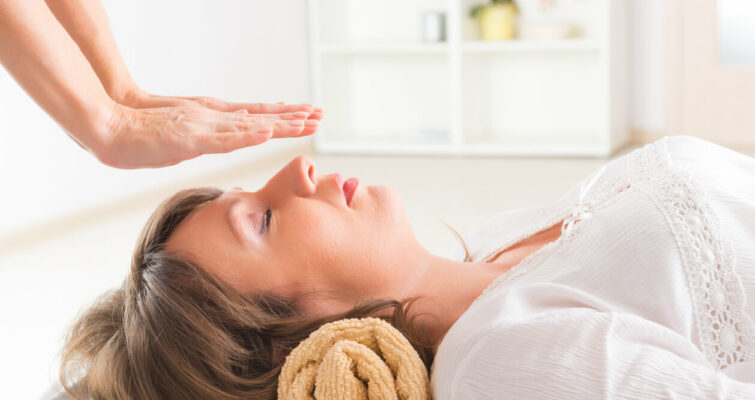Massage therapy for your skull? Not exactly, but CranioSacral Therapy (CST), does involve a practitioner who uses her hands to manipulate areas on your head. CST is an effective and medication-free healing treatment that helps with numerous diseases, injuries, and emotional trauma (see details below). Most recently, an article published in The Journal of Alternative and Complementary Medicine discusses the recent findings of a pilot study that looked at the effects of CST for former football players who suffer from physical pain, brain injuries, and repeating concussions. The athletes reported improvements that included better range of motion, reduced pain, more restful sleep, and enhanced cognitive function. I love this type of therapy so much that my practice CentreSpring MD has an onsite practitioner devoted to helping our patients!
What is CranioSacral Therapy? CranioSacral Therapy (CST) is a gentle touch hands-on medical technique designed to assist the body in self-correction by monitoring and palpitating the flow of the cerebral spinal fluid. A practitioner, by providing hands on palpation at the temporal bones (on your skull or head), is able to detect rhythmic pulses where the skull expands and contracts and is believed to represent the pulses of the cerebrospinal fluid. This fluid and the tissues in the brain and spinal cord protect and nourish your entire body. The manipulations are applied with a soft touch of no greater than about the weight of a nickel. The process was developed by an osteopathic physician and biomechanics professor at Michigan State University in the 1970s.
Why should you try it now?
This is a gentle yet powerful form of healing therapy that is ideal for alleviating multiple symptoms of injury or disease, recent or old. The results include physical relief and comfort along with an enhanced sense of well-being. CST has been shown to help with the following:
- Headaches, migraines, TMJ
- Arthritis and poor circulation
- Ulcerative conditions
- Chronic neck and back pain
- Fibromyalgia
- Scoliosis
- Brain and spinal cord injuries including concussions and traumatic brain injury
- Physical and emotional abuse
- Chronic fatigue and depression
- Sensory, motor, and intellectual dysfunctions
- Post-Traumatic Stress Disorder (PTSD)
- Attention Deficit and Hyperactivity Disorder (ADHD)
- Autism Spectrum
- Emotional eating
What to expect at a CST session—how it works, what to wear, etc.
CST application and response varies from individual to individual and from condition to condition. The number of sessions can last for one to three weeks, or for several more. At our practice CST takes place in a quiet private setting. We recommend that you wear loose, comfortable clothing. Patients recline on a massage or treatment table while the practitioner stands or sits at the client’s head, middle torso, and feet. The sessions last about 75-minutes, and most patients report that they feel extremely relaxed and happy.
How to find a CranioSacral Therapy Practitioner You can find a CST practitioner in your area and for your specific condition at the International Association of Healthcare Practitioners.


